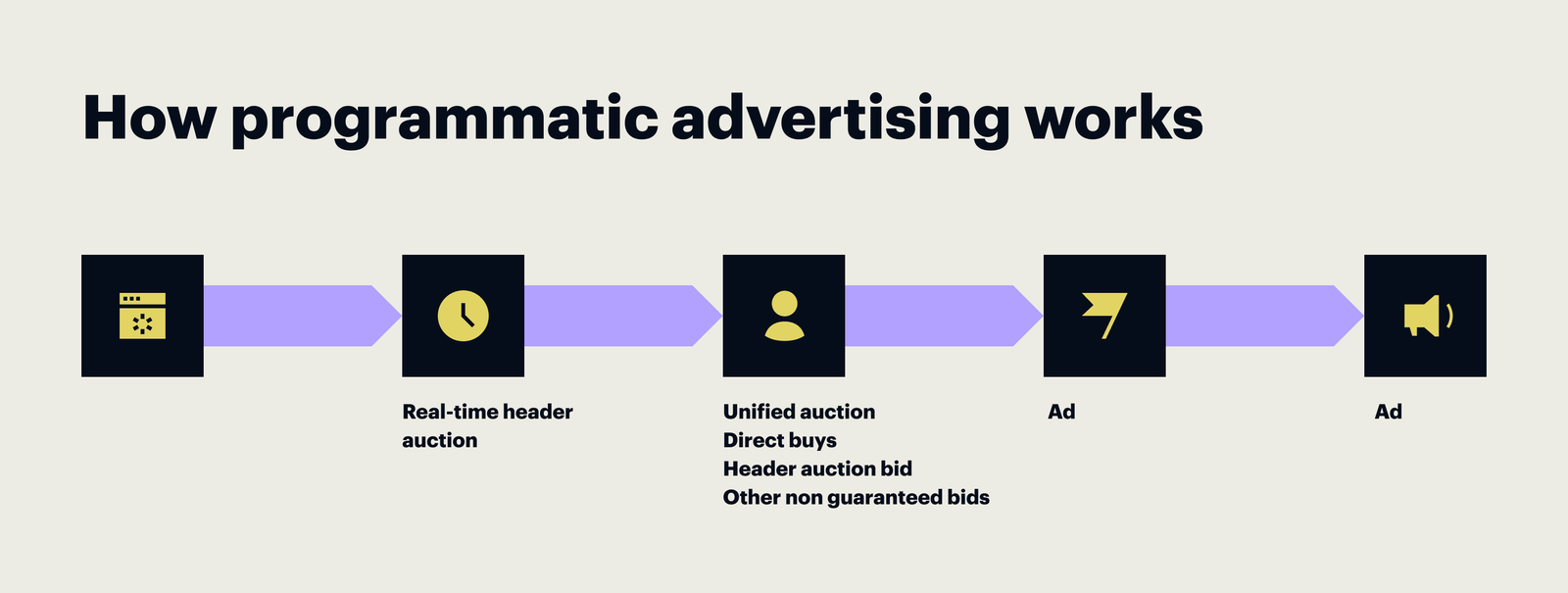In the ever-evolving landscape of digital marketing, programmatic advertising has emerged as a game-changer. As brands seek more efficient and effective ways to reach their audiences, programmatic advertising offers a solution through automated ad buying processes. This article delves into the rise of programmatic advertising, its benefits, and how businesses can leverage this technology to enhance their marketing efforts.
What is Programmatic Advertising?
Definition: Programmatic advertising refers to the use of automated technology for media buying (purchasing ad space) in real-time. Unlike traditional ad buying methods, which involve negotiations, requests for proposals, and manual insertion orders, programmatic advertising uses algorithms and machine learning to purchase ad impressions.
Key Components:
- Real-Time Bidding (RTB): A core aspect of programmatic advertising, where ad impressions are bought and sold in real-time through automated auctions.
- Private Marketplaces (PMPs): These are invite-only auctions where high-quality inventory is made available to a select group of advertisers.
- Programmatic Direct: Involves direct deals between advertisers and publishers, bypassing the auction process.
The Growth of Programmatic Advertising

Rapid Adoption: Programmatic advertising has seen exponential growth in recent years, with a significant portion of digital ad spending now transacted programmatically. The global programmatic ad spend is expected to continue its upward trajectory as more businesses recognize its value.
Key Drivers:
- Efficiency: Automated buying processes reduce the time and effort involved in ad purchasing, allowing for more precise targeting and better use of ad budgets.
- Data-Driven Decisions: Programmatic advertising leverages vast amounts of data to optimize ad placements, ensuring that ads are shown to the right people at the right time.
- Scalability: The technology allows advertisers to scale their campaigns quickly and efficiently across multiple channels and devices.
Benefits of Programmatic Advertising
1. Enhanced Targeting: Programmatic advertising enables more precise targeting based on demographics, behaviors, and even real-time contexts. This ensures that ads are highly relevant to the audience, improving engagement and conversion rates.
2. Real-Time Optimization: Advertisers can monitor campaign performance in real-time and make adjustments on the fly. This agility leads to better outcomes and a higher return on investment (ROI).
3. Cost Efficiency: By automating the buying process and eliminating the need for manual negotiations, programmatic advertising reduces costs and maximizes ad spend efficiency.
4. Greater Transparency: Advertisers gain greater visibility into where their ads are being placed and how they are performing. This transparency helps in building trust and making informed decisions.
Challenges in Programmatic Advertising
1. Ad Fraud: The automated nature of programmatic advertising can make it susceptible to ad fraud, where bots generate fake impressions and clicks. Advertisers need to use fraud detection tools and work with trusted partners to mitigate this risk.
2. Brand Safety: There’s a risk of ads appearing alongside inappropriate or harmful content. To protect their brand, advertisers must use brand safety tools and carefully select their programmatic partners.
3. Complexity: The programmatic ecosystem can be complex, with multiple platforms, data sources, and technologies involved. Businesses may need to invest in specialized skills or partner with experienced agencies to navigate this landscape effectively.
How to Leverage Programmatic Advertising for Your Business
1. Start with Clear Objectives: Define what you want to achieve with your programmatic campaigns, whether it’s increasing brand awareness, driving website traffic, or boosting sales.
2. Choose the Right Platform: Select a programmatic platform that aligns with your business goals and offers the targeting, reporting, and optimization features you need.
3. Focus on Data: Use first-party data to enhance your targeting and combine it with third-party data for more comprehensive audience insights.
4. Test and Optimize: Continuously test different creatives, targeting options, and bidding strategies. Use the data to optimize your campaigns for better performance.
5. Prioritize Brand Safety: Ensure your ads are shown in safe and relevant environments by implementing brand safety measures and working with trusted partners.
Conclusion
Programmatic advertising is revolutionizing the way businesses approach digital marketing, offering unprecedented efficiency, targeting capabilities, and scalability. As this technology continues to evolve, it will become an even more integral part of the marketing mix. By understanding the fundamentals of programmatic advertising and staying ahead of trends, businesses can harness its power to achieve their marketing objectives.



